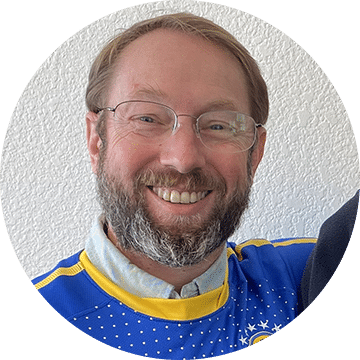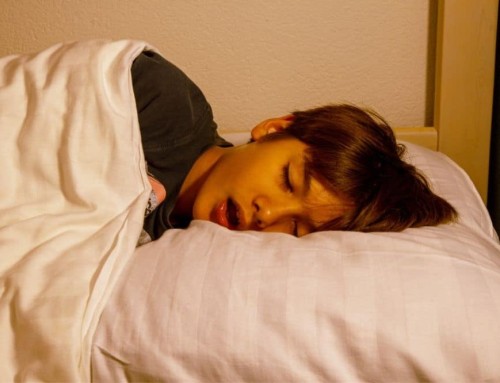Sleep-disordered breathing (SDB) is more than just disrupted rest—it often reflects structural and functional imbalances in the airway, jaw, and tongue. At Airway Orthodontics, we take a comprehensive, function-first approach to care by integrating airway-focused orthodontics with myofunctional therapy in Rocklin, CA. This combined method supports proper breathing patterns, healthy tongue posture, and balanced oral muscle function—all of which contribute to long-term airway health.
Understanding the Function Behind Sleep-Disordered Breathing
Sleep-disordered breathing includes issues like snoring and obstructive sleep apnea. These conditions are often caused by structural or muscle imbalances in the airway.
In children, symptoms may appear as:
- Restless sleep or mouth breathing
- Bedwetting
- Behavioral changes
In adults, warning signs can include:
- Fatigue or daytime tiredness
- TMJ pain or jaw tightness
- Loud snoring
Recognizing the cause early helps guide treatment that supports proper airway growth and lifelong healthy breathing.
Airway Orthodontics: Addressing the Structural Foundation
Airway orthodontics focuses on jaw development to create more space for the tongue and airway.
Instead of just straightening teeth, it encourages three-dimensional jaw growth—width, depth, and height—to improve overall function.
This approach helps:
- Encourage forward jaw growth
- Increase tongue space
- Promote nasal breathing
- Reduce lip strain or open-mouth posture
While these changes support structure, the surrounding muscles also need retraining. That’s where myofunctional therapy comes in.
What Is Myofunctional Therapy?
Myofunctional therapy retrains the muscles of the face, mouth, and tongue. Through targeted exercises, patients learn to improve oral posture, swallowing, and nasal breathing.
These exercises help:
- Strengthen the tongue, lips, and cheeks
- Keep the tongue resting on the roof of the mouth
- Improve swallowing coordination
- Prevent airway collapse during sleep
Over time, these exercises improve both daytime and nighttime breathing by supporting the muscles that maintain an open airway.
Why Tongue Position and Muscle Function Matter
When the tongue rests low in the mouth, it can fall backward during sleep and block airflow—causing snoring or pauses in breathing. A tongue-up posture, resting on the palate, helps keep the airway open and supports healthy jaw and facial growth.
Myofunctional therapy teaches this proper tongue posture, while orthodontic treatment ensures there’s enough jaw space to support it. Together, they help improve airway stability and reduce strain on the TMJ.
Working Together: Orthodontics and Myofunctional Therapy
When combined, these two treatments address both structure and function:
- Airway orthodontics builds physical space for the airway.
- Myofunctional therapy trains muscles to use that space properly.
Together, they can improve:
- Nasal breathing
- Tongue posture
- Muscle tone
- Long-term airway stability
Many patients notice better sleep, more energy, and reduced jaw tension.
Myofunctional Therapy for Children and Adults
For Children
In kids, early therapy supports growth and prevents long-term issues. It helps:
- Guide facial and oral development
- Break habits like thumb sucking or mouth breathing
- Encourage nasal airflow and tongue-up posture
For Adults
In adults, therapy can reduce symptoms like:
- Jaw clenching or tension
- Headaches and fatigue
- Airway collapse during sleep
It’s also useful after orthodontic treatment to maintain proper muscle function.
Long-Term Stability and Outcomes Without CPAP
Traditional treatments for sleep apnea, such as CPAP machines, focus on managing airflow but do not address the underlying structural or functional causes of airway collapse. While CPAP can be effective for symptom control, many patients seek long-term options that support independence and natural breathing.
Combining airway orthodontics with muscle re-training through myofunctional therapy, the goal shifts toward encouraging natural airway stability, especially during sleep. Although individual results vary, this approach supports functionally grounded improvement over time. By improving jaw position and muscle tone, many patients also experience relief from TMJ discomfort that may be contributing to disrupted sleep or chronic facial tension.
As with any treatment, regular follow-up and personalized planning are essential to ensuring that structural and behavioral changes are progressing harmoniously.
A Collaborative, Provider-Guided Approach to Airway and TMJ Health
At Airway Orthodontics, we know lasting results come from treating the whole system—not just the teeth.
Our integrated care addresses bone, muscle, posture, and breathing habits to support balanced oral and airway function.
By working closely with myofunctional therapists, we design treatment plans that improve:
- Breathing
- Sleep quality
- TMJ comfort
- Long-term oral stability
Learn More About Your Options
If you or your child has been diagnosed with sleep-disordered breathing, or you’re noticing signs like mouth breathing, restless sleep, or poor tongue posture, early evaluation can provide valuable insight and direction. We invite you to schedule a consultation to learn more about myofunctional therapy in Rocklin, CA, and how it may support your treatment goals alongside airway orthodontics.
Contact Airway Orthodontics today at (916) 435-9575 to learn more about how myofunctional therapy and airway orthodontics may work together to support long-term breathing health, and click the button below to schedule your consultation.



